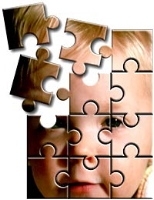MIT brain researchers are undertaking an ambitious, multifaceted approach to understanding the genetic, molecular and behavioral aspects of autism, with the help of a $7.5 million grant from the New York-based Simons Foundation founded by James and Marilyn Simons.
Autism, which affects as many as 1.5 million people, is considered the fastest growing developmental disability in America. Typically appearing during the first three years of life, autism is characterized by impairment in social interaction and communication abilities and by repetitive behaviors. Services for autistic adults cost $90 billion a year. Early diagnosis and intervention can cut the cost of lifelong care by two-thirds.
Studies indicate that the disorder may involve multiple genes. "A major step toward a mechanistic understanding of autism will be to establish the function of the candidate genes and molecules," said program director Mriganka Sur, head of the Department of Brain and Cognitive Sciences at MIT and Sherman Fairchild Professor of Neuroscience. "Because autism's symptoms involve many different dimensions of brain function -- social, cognitive, visual, motor, language -- a full understanding involves an analysis of the range of dysfunctions and their probable causes.
"The projects funded by the Simons Foundation grant involve MIT researchers who are expert in diverse areas, including human brain imaging, visual psychophysics, brain development, neuronal plasticity, cortical physiology and mouse genetics. This is a novel and unique combination of strengths to be brought to bear on a single devastating brain disorder," Sur said.
"MIT is entering a new era of neuroscience and cognitive science," said MIT President Susan Hockfield. "The timing has never been better for applying our new ideas and technologies to understanding brain disorders."
Under the grant, research projects will be led by Sur; Mark Bear, Picower Professor of Neuroscience at the Picower Institute for Learning and Memory; John Gabrieli, Grover Hermann Professor of Health Sciences and Technology and Brain and Cognitive Sciences and associate director of the Athinoula A. Martinos Center for Biomedical Imaging; Ann Graybiel, Walter A. Rosenblith Professor of Neuroscience in the McGovern Institute for Brain Research; Pawan Sinha, associate professor of Brain and Cognitive Sciences; and Susumu Tonegawa, director of the Picower Institute for Learning and Memory and Picower Professor of Neuroscience.
Collaborators include researchers at the Yale Child Study Center, University of Sydney, Boston University, Children's Hospital Boston and Massachusetts General Hospital.
The grant also will fund a new Boston-area seminar series on autism and developmental disorders hosted at MIT.
In making the grant, the Simons Foundation noted, "We are excited to be involved in supporting the work of these exceptional scientists, and hope their insights will enhance our understanding of this serious life-term disorder."
The projects are:
- Using new gene targeting, physiological and imaging techniques, the Sur team will develop tools for creating mouse and other animal models for autism and explore whether autism-related genes are involved in two key aspects of brain development and function in the cerebral cortex.
- Bear will look at mutations in the gene causing Fragile X syndrome, which shares similarities with autism. Bear's work indicates that by blocking a single brain chemical, many of the psychiatric and neurological disabilities associated with Fragile X and autism could be treated.
- Using state-of-the-art brain imaging techniques, Gabrieli will seek to understand how neurons play a role in autistic individuals' problems with social interaction and face recognition.
- Graybiel's team has cloned genes that may be related to autism or related disorders and will seek to understand the function of two molecules of a particular group. This information may lead to new mouse models.
- Sinha studies face processing ability in children with autism and is developing a methodology called VisTA (visual training and assessment) to help them refine skills such as maintaining eye contact and reading facial expressions, body postures and gestures.
- Tonegawa's team will investigate the functional interaction between two genes that are implicated in both Fragile X syndrome and autism.
The Simons Foundation primarily supports advanced research and graduate education in basic science and mathematics. In a previous grant to the Institute, the foundation established three endowed chairs and a lecture series in the Department of Mathematics.
A version of this article appeared in MIT Tech Talk on October 5, 2005 (download PDF).






